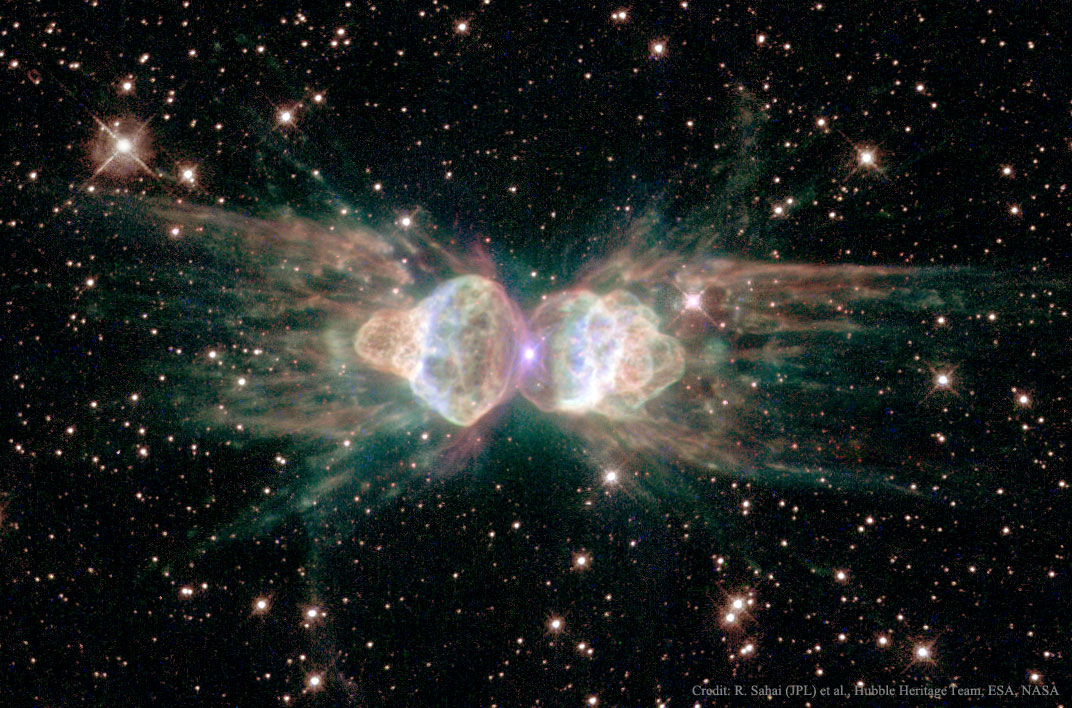2021年04月25日
Planetary Nebula Mz3: The Ant Nebula
Image Credit: R. Sahai (JPL) et al., Hubble Heritage Team, ESA, NASA
Explanation: Why isn’t this ant a big sphere? Planetary nebula Mz3 is being cast off by a star similar to our Sun that is, surely, round. Why then would the gas that is streaming away create an ant-shaped nebula that is distinctly not round? Clues might include the high 1000-kilometer per second speed of the expelled gas, the light-year long length of the structure, and the magnetism of the star featured here at the nebula’s center. One possible answer is that Mz3 is hiding a second, dimmer star that orbits close in to the bright star. A competing hypothesis holds that the central star’s own spin and magnetic field are channeling the gas. Since the central star appears to be so similar to our own Sun, astronomers hope that increased understanding of the history of this giant space ant can provide useful insight into the likely future of our own Sun and Earth.
Tomorrow’s picture: interstellar tours
行星状星云Mz3: 蚂蚁星云
影像提供: R. Sahai (JPL) et al., Hubble Heritage Team, ESA, NASA
说明: 为何是蚂蚁而不是大球?行星状星云Mz3,是由一颗类似太阳而且必然是球形的恒星所抛出的。然而,为何向外泛流的气体拥有蚂蚁的外观而非球形呢?有用的线索包括:喷出的气体流速高达每秒1000多公里、长达数光年的长条结构、以及星云中心的恒星磁性。一个可能的答案是:Mz3星云靠近影像中心亮星附近,隐藏着第二颗紧绕着亮星运行的较暗恒星。另一个竞争假说指出:中心星的自转与磁场,导引气体的流动。由于这颗中心星与太阳看起来极为类似,天文学家希望经由深入了解这只庞大太空蚂蚁的历史,能让我们洞见太阳与地球的可能未来。
明日的图片: interstellar tours







